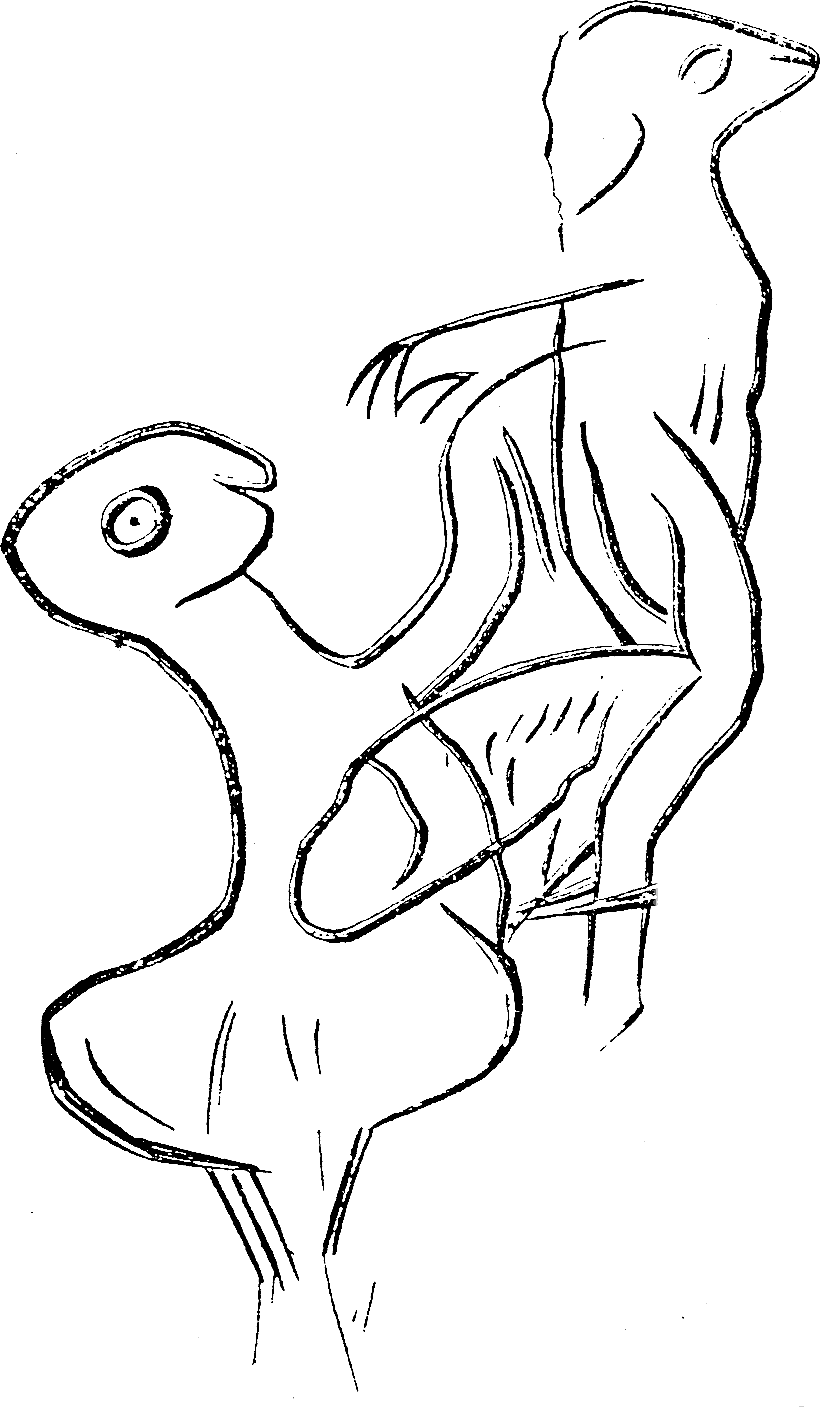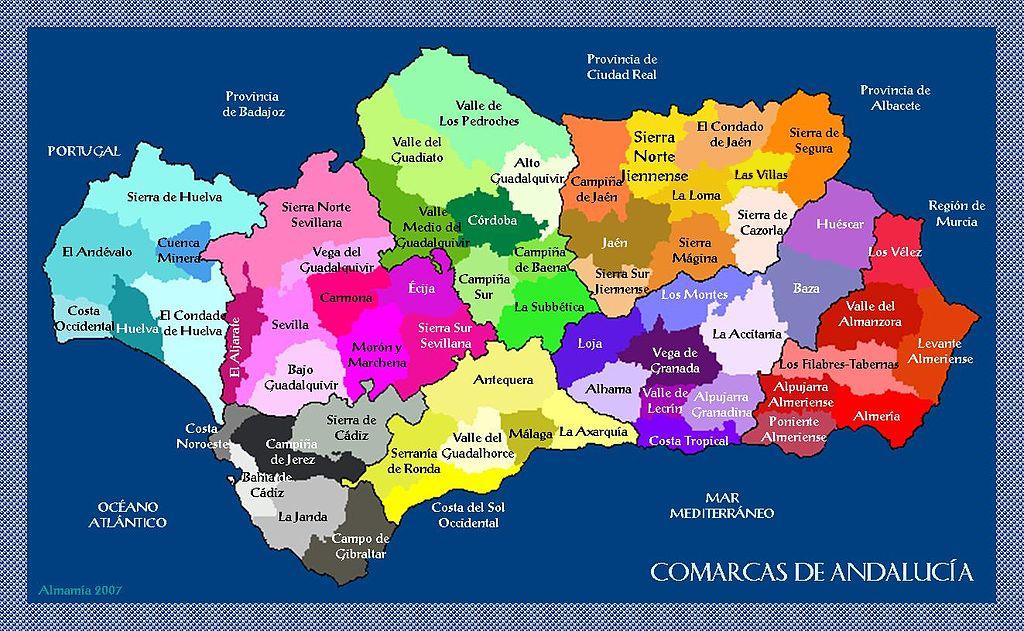|
Ciudad Real Province
The province of Ciudad Real () is a province in the southwestern part of the autonomous community of Castile-La Mancha, Spain. It is bordered by the provinces of Cuenca, Albacete, Jaén, Córdoba, Badajoz, and Toledo. It is partly located in the old natural region of La Mancha. Its capital is Ciudad Real. It is the third largest province by area in all of Spain, after Cáceres and Badajoz. The historic comarca Campo de Calatrava is located in the center of the province. History Ciudad Real was one of the 49 provinces in which Spain was divided in the territorial reorganization of 1833, taking its name from its largest city and capital. Its limits corresponded more or less to the historical province of La Mancha, which was part of the kingdom of Toledo. The Spanish government created the autonomous community of Castilla-La Mancha on 15 November 1978, as one of several autonomous regions. The new, hyphenated name was chosen to join the historic Castilla region, which exten ... [...More Info...] [...Related Items...] OR: [Wikipedia] [Google] [Baidu] |
Provinces Of Spain
A province in Spain * , ; grammatical number, sing. ''provincia'') * Basque language, Basque (, grammatical number, sing. ''probintzia''. * Catalan language, Catalan (), grammatical number, sing. ''província''. * Galician language, Galician (), grammatical number, sing. ''provincia''. is a political divisions of Spain, territorial division defined as a collection of municipalities of Spain, municipalities. The current provinces of Spain correspond by and large to the provinces created under the purview of the 1833 territorial division of Spain, 1833 territorial re-organization of Spain, with a similar predecessor from 1822 territorial division of Spain, 1822 (during the Trienio Liberal) and an earlier precedent in the 1810 Napoleonic division of Spain into 84 prefectures. There are many other groupings of municipalities that comprise the local government in Spain, local government of Spain. The boundaries of provinces can only be altered by the Spanish Parliament, giving ri ... [...More Info...] [...Related Items...] OR: [Wikipedia] [Google] [Baidu] |
Province Of Albacete
Albacete () is a province of central Spain, in the southern part of the autonomous community of Castile–La Mancha. As of 2012, Albacete had a population of 402,837 people. Its capital city, also called Albacete, is by road southeast of Madrid. History The territory occupied by the province of Albacete has been inhabited since ancient times, as evidenced by cave paintings in the Cueva del Niño and Cueva de la Vieja. In Roman times, the territory of the present province of Albacete was part of Carpetania and Celtiberia, Contestania, Bastetania and Oretania. The Romans built a significant settlement at Libisosa, and during the age of the Visigoths, Tolmo de Minateda grew in prominence. During the Muslim era, territories of the province were under different zones of influence, and numerous farmhouses, castles and watchtowers developed to fight off invaders. A number of battles were held here in the Middle Ages, and on April 25, 1707, the Battle of Almansa was held in ... [...More Info...] [...Related Items...] OR: [Wikipedia] [Google] [Baidu] |
Province Of Guadalajara
Guadalajara ( , ) is a province of Spain, belonging to the autonomous community of Castilla–La Mancha. As of 2019 it had a population of 258,890 people. The population of the province has grown in the last 10 years. It is located in the centre of the Iberian Peninsula. History Prehistory The province has been inhabited since the Paleolithic as evidenced by stone tools found on the banks of the Henares and Linares rivers. There are also numerous prehistoric cave paintings in the Cueva de los Casares in Riba de Saelices while Megalithic tombs from the 4th millennium B.C. have been found at various sites in the province including Alcolea del Pinar. There are remains of several Bronze Age settlements along the river banks in the area, notably that in Loma del Lomo in Cogolludo as well as a late Bronze Age settlement in Mojares. Celtiberians and Romans The Celtiberians occupied the territory during the late Iron Age between the 6th and 3rd centuries B.C. in Sigüenza, At ... [...More Info...] [...Related Items...] OR: [Wikipedia] [Google] [Baidu] |
Castile (historical Region)
Castile or Castille (; ) is a territory of imprecise limits located in Spain. The use of the concept of Castile relies on the assimilation (via a metonymy) of a 19th-century determinism, determinist geographical notion, that of Castile as Spain's ("tableland core", connected to the Meseta Central) with a long-gone historical entity of diachronically variable territorial extension (the Kingdom of Castile). The proposals advocating for a particular semantic codification/closure of the concept (a ''dialogical'' construct) are connected to Essentialism#In historiography, essentialist arguments relying on the Reification (fallacy), reification of something that does not exist beyond the social action of those Social constructivism, building Castile not only by Castilian nationalism, identifying with it as a homeland of any kind, but also Alterity, ''in opposition'' to it. A hot topic concerning the concept of Castile is its relation with Spain, insofar intellectuals, politicians, writ ... [...More Info...] [...Related Items...] OR: [Wikipedia] [Google] [Baidu] |
1833 Territorial Division Of Spain
The 1833 territorial division of Spain divided the country into provinces, in turn classified into "historic regions" ().''Real Decreto de 30 de noviembre de 1833'' on Wikisource; ''Real Decreto de 30 de noviembre de 1833'' on the official web site of the government of the Canary Islands. Retrieved 31 December 2009. Original announcement in th ''Gaceta num. 154.'' on th [...More Info...] [...Related Items...] OR: [Wikipedia] [Google] [Baidu] |
Campo De Calatrava
Campo de Calatrava is a comarca in the province of Ciudad Real, Castilla-La Mancha, Spain. Ciudad Real, the provincial capital, belongs to the Campo de Calatrava. A ''Denominación de Origen'' for olive oil takes its name from the comarca. There are olive groves in sixteen of the municipios, mainly containing a cultivar called cornicabra. Vineyards and crops of barley are also common to the area. Saffron is another crop cultivated in the area. The relief consists of sedimentary plains interspersed by small Appalachian folds, likewise distinctly featuring remains of volcanic activity. Historically, the area is connected to the Order of Calatrava, founded in 1158 to defend the fortress of Calatrava. Calatrava had passed to Christian control about a decade earlier, in 1147. The Calatravan order lost their stronghold and the entire Campo de Calatrava to Almohad The Almohad Caliphate (; or or from ) or Almohad Empire was a North African Berber Muslim empire founded in the 12t ... [...More Info...] [...Related Items...] OR: [Wikipedia] [Google] [Baidu] |
Comarcas Of Spain
In Spain, a ''comarca'' () is either a traditional territorial division without any formal basis, or a group of municipalities of Spain, municipalities, legally defined by an autonomous communities of Spain, autonomous community for the purpose of providing common local government in Spain, local government services. In English, a comarca is equivalent to an area, county, district, or region, zone. Legally defined comarcas The large majority of legally defined comarcas are in comarques of Catalonia, Catalonia (42) and Comarcas of Aragon, Aragon (33), and are regulated by law and are governed by a comarcal council with specified powers. There are seven comarcas formally registered in Comarcas of the Basque Country, Basque Country and one, El Bierzo, in Castile and León. In Comarcas_of_Andalusia, Andalusia, Comarcas of Galicia, Galicia, Comarques of the Valencian Community, Valencia and Comarcas of Asturias, Asturias, comarcas are defined by regional law but lack any specific ... [...More Info...] [...Related Items...] OR: [Wikipedia] [Google] [Baidu] |
Province Of Cáceres
The province of Cáceres (; ; ; ) is a province of western Spain, and makes up the northern half of the autonomous community of Extremadura. Its capital is the city of Cáceres. Other cities in the province include Plasencia, Coria, Navalmoral de la Mata, and Trujillo, the birthplace of Francisco Pizarro González. , the province had 388,652 inhabitants, of whom a quarter lived in the capital. The Tagus river runs through the province. Geography The northern natural border of the province is formed by the east–west running Sierra de Gredos which is part of the Sistema Central. The valleys North of Cáceres include the Valle del Jerte, the gorges of la Vera, the Ambroz Valley, and Las Hurdes with mountain rivers and natural pools. The southern border consists of the Montes de Toledo. The remainder of the province is a plain, through which the river Tagus and its tributaries run. The mountains are rich in wildlife, and in 1979, a nature park was created at Mo ... [...More Info...] [...Related Items...] OR: [Wikipedia] [Google] [Baidu] |
La Mancha
La Mancha () is a natural region, natural and historical region in the provinces of Spain, Spanish provinces of province of Albacete, Albacete, province of Cuenca, Cuenca, province of Ciudad Real, Ciudad Real and province of Toledo, Toledo. It is a fertile plateau (610 m or 2000 ft) that stretches from the mountains of Toledo, Spain, Toledo to the western spurs of the Cuenca, Spain, Cuenca hills, bordered to the south by the Sierra Morena and to the north by the Alcarria. The La Mancha historical comarca constitutes the southern portion of Castilla-La Mancha autonomous community and makes up most of the present-day administrative region. Etymology The name ''La Mancha'' is probably derived from the Arabic word المنشأ ''al-mansha'', meaning "land without water". The name of the city of Almansa in Province of Albacete, Albacete shares that origin. The name describes the region's dryland farming soils. Another etymology ascribes the origin of ''La Mancha'' to المان ... [...More Info...] [...Related Items...] OR: [Wikipedia] [Google] [Baidu] |
Natural Region
A natural region (landscape unit) is a basic geographic unit. Usually, it is a region which is distinguished by its common natural features of geography, geology, and climate. From the ecological point of view, the naturally occurring flora and fauna of the region are likely to be influenced by its geographical and geological factors, such as soil and water availability, in a significant manner. Thus most natural regions are homogeneous ecosystems. Human impact can be an important factor in the shaping and destiny of a particular natural region. Main terms The concept "natural region" is a large basic geographical unit, like the vast boreal forest region. The term may also be used generically, like in alpine tundra, or specifically to refer to a particular place. The term is particularly useful where there is no corresponding or coterminous official region. The Fens of eastern England, the Thai highlands, and the Pays de Bray in Normandy, are examples of this. Others mig ... [...More Info...] [...Related Items...] OR: [Wikipedia] [Google] [Baidu] |
Province Of Toledo
Toledo () is a Province (Spain), province of central Spain, in the western part of the Autonomous communities of Spain, autonomous community of Castile–La Mancha. It is bordered by the provinces of Madrid Province, Madrid, Cuenca Province (Spain), Cuenca, Ciudad Real Province, Ciudad Real, Badajoz Province, Badajoz, Cáceres Province, Cáceres, and Ávila Province, Ávila. Its capital is the city of Toledo, Spain, Toledo. Demography Of the province's 711,228 people (2012), only about 1/9 live in the capital, Toledo, Spain, Toledo, which is also the capital of the autonomous community. The most populated municipalities in the province are Toledo and Talavera de la Reina with 83,741 and 83,303 inhabitants each (INE, 2017). The province contains 204 municipalities. The smallest municipality in Spain, Illán de Vacas, Toledo, Illán de Vacas, with a population of 3, is in Toledo province. See List of municipalities in Toledo. Population development The historical population is g ... [...More Info...] [...Related Items...] OR: [Wikipedia] [Google] [Baidu] |




